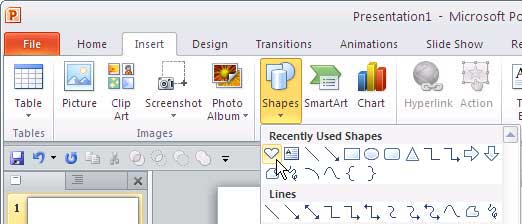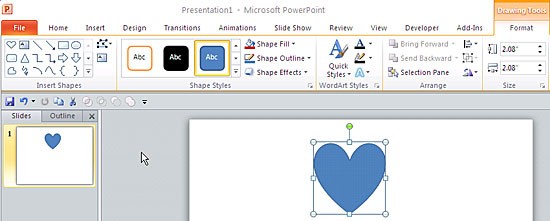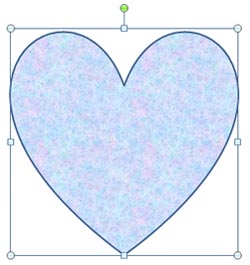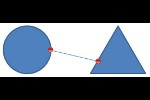Add texture fills to shapes in PowerPoint 2010 for Windows. Seamless textures work best for such fills.
Author: Geetesh Bajaj
Product/Version: PowerPoint 2010 for Windows
OS: Microsoft Windows XP and higher
We have already shown you how to add solid, picture, and gradient fills to shapes within your PowerPoint 2010 for Windows slides. In this tutorial we'll show you how you can use Texture Fills, which incidentally are not too different from picture fills that can be tiled. If you want to see a sample presentation showing Texture Fills in PowerPoint, scroll down to the bottom of this page.
Before we get into textures, it's important to understand how PowerPoint treats them differently from pictures. Yes, both textures and pictures are bitmaps saved in pixel based formats like JPEG, GIF, BMP, PNG, TIFF, etc. The main difference between textures and pictures is that while textures are seamless, bitmaps are not necessarily seamless. Seamless means that if you tile up a texture, it will not show any edges while tiling thus providing an illusion of a seamless expanse.
In Figure 1, the graphic on the left shows how a texture tiles up, while the graphic on the right shows how a regular bitmap that is not seamless tiles up. If you want to see the Figure below in a larger size, click on it to open a new window that shows a larger preview.

Figure 1: Seamless and non-seamless samples
Of course you can also use a non-seamless picture as a texture, almost like the sample on the right in Figure 1 above!
PowerPoint 2010 includes 24 seamless textures which can be applied to any shape, and you can even import more seamless textures that you can buy from third-party providers like Ppted.com.
Follow these steps to change or apply a Texture Fill to a shape:





Sample Presentation:
Click below to view this presentation on SlideShare
Click below to view this presentation on YouTube
See Also:
Fills for Shapes: Add Texture Fills to Shapes (Glossary Page)
Add Texture Fills to Shapes in PowerPoint 2016 for Windows
Add Texture Fills to Shapes in PowerPoint 2016 for Mac
Add Texture Fills to Shapes in PowerPoint 2013 for Windows
Add Texture Fills to Shapes in PowerPoint 2011 for Mac
Add Texture Fills to Shapes in PowerPoint 2007 for Windows
Add Texture Fills to Shapes in PowerPoint 2003 and 2002 for Windows
You May Also Like: Consumer vs. Professional Displays for Digital Signage | Animals - C PowerPoint Templates




Microsoft and the Office logo are trademarks or registered trademarks of Microsoft Corporation in the United States and/or other countries.